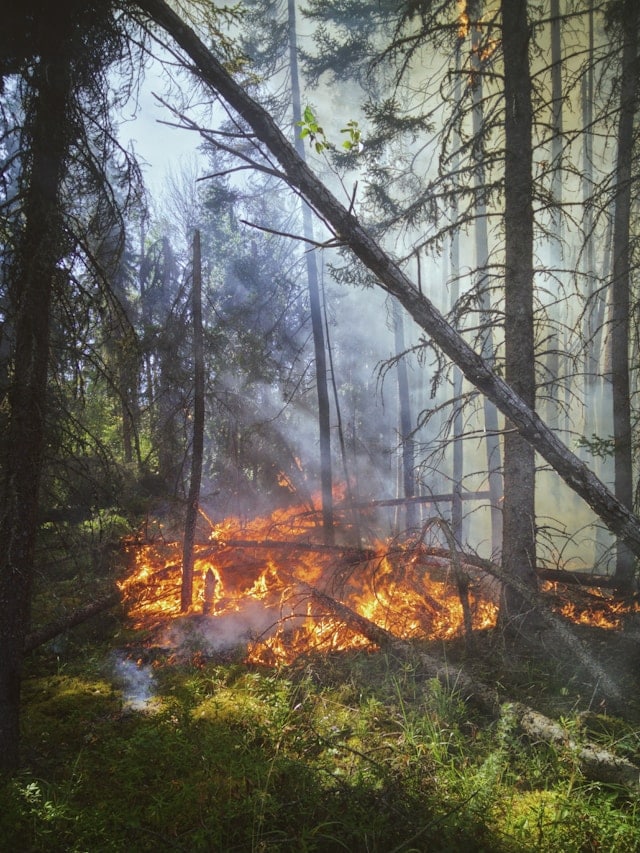How Is AI Assisting in the Early Detection of Forest Fires?

With wildfires becoming an increasingly common occurrence in regions like California, technology has taken the helm to combat this environmental catastrophe. Leveraging artificial intelligence (AI) and data-driven innovations, the focus has shifted to early detection of wildfires. In this article, we’ll delve into how AI-based systems, satellite images, and other state-of-the-art technologies are transforming the way forest fires are detected and managed.
AI and Fire Detection: An Unlikely Alliance
In the battle against wildfires, the first weapon is early detection. The sooner a burgeoning fire is identified, the quicker the response can be. Traditional methods of detection such as watchtowers and human surveillance have proven to be limiting, and that’s where AI steps in.
Cela peut vous intéresser : What’s the Role of Experiential Learning in UK’s Higher Education System?
Artificial intelligence has revolutionized the process of wildfire detection, offering a fast and efficient system. By analyzing vast amounts of data in real-time, AI can detect the signs of a potential wildfire quickly and accurately. This technology leverages several types of data, including satellite images, weather data, and real-time feeds from cameras placed in fire-prone areas.
AI-Based Cameras: The Watchful Eyes in the Forest
One of the key components in the AI-based fire detection system are the specially designed cameras. These cameras are strategically placed throughout high-risk areas, such as the dense forests of San Bernardino in California, capturing images in real-time and transmitting this data back to a central system.
Lire également : How to Combat Loneliness in the UK with Community-Led Social Initiatives?
These AI-infused cameras are designed to detect the smallest signs of smoke or fire. They utilize a combination of thermal imaging and smoke detection algorithms to identify potential fires. Once the system detects any anomalies that may indicate a fire, it triggers an alert, ensuring the authorities are notified in the shortest possible time. This quick response can make the difference between a manageable fire and a wildfire.
Satellite Images: The Bird’s Eye View of Wildfires
The use of satellite data is another significant innovation in the early detection of forest fires. Satellites circling our planet capture high-resolution images regularly, providing a constant stream of data for AI to analyze.
These images allow the AI system to establish a baseline of what the vegetation and standard conditions in a forest or region should look like. Any significant deviation from this baseline, such as an unusually bright spot or smoke, can be a sign of a fire.
AI-based systems are trained to identify these signs using machine learning algorithms. They are capable of recognizing patterns and anomalies in the satellite images that may be indicative of a fire. Once a potential fire is detected, the system triggers an alert, prompting immediate action from the relevant authorities.
AI and Predictive Analysis: Forecasting the Unforeseen
Apart from early detection, AI is also capable of predicting areas that are at high risk of catching fire by analyzing a variety of factors such as weather data, vegetation, and past fire incidents.
For instance, if a region in California has dry weather conditions, dense vegetation, and a history of wildfires, the AI system flags it as a potential high-risk area. This predictive analysis allows authorities to take preventive measures, such as removing excess vegetation or implementing fire breaks, thereby reducing the risk or impact of a potential fire.
AI’s predictive capabilities also extend to forecasting the spread of a fire once it has started. The system can analyze wind direction, topography, and other factors to predict the likely path of the fire. This allows for more efficient deployment of firefighting resources and helps to mitigate the damage caused by the fire.
Harnessing AI for a Safer Future
With the increasing threat of wildfires, harnessing the power of AI has become a necessity rather than a luxury. Artificial intelligence is not just improving the early detection of forest fires, but it’s also helping to predict, manage, and in some cases, prevent fires from happening in the first place.
Indeed, integrating AI into fire detection and management systems marks a significant step in our collective fight against wildfires. By leveraging cutting-edge technology, we can ensure a safer future for our forests and the communities that call them home.
Remember, artificial intelligence is a tool, and like all tools, its effectiveness depends on how we use it. With the continued refinement and advancement of AI technologies, the hope for a future where wildfires can be detected, controlled, and even prevented in a timely and efficient manner seems more achievable than ever.
Real-time Monitoring and Machine Learning: The Power Behind AI
Meeting the challenge of early wildfire detection involves the real-time monitoring and processing of vast amounts of data. Artificial intelligence, with its ability to handle large datasets in real-time, is well suited to this task.
AI systems, such as those developed by the University of California, San Diego, harness the power of machine learning algorithms to analyze real-time feeds from mountaintop cameras placed in fire-prone areas. The AI system learns to recognize patterns associated with the early stages of a fire, such as a small smoke plume. It then compares these patterns with current images from the cameras. If the system detects a deviation from the norm that could indicate a fire, it immediately sends an alert to the main firefighting agency, Cal Fire.
The importance of real-time monitoring in wildfire detection cannot be overstated. The rapid response enabled by real-time monitoring could mean the difference between a small, manageable fire and a large, destructive wildfire. However, the effectiveness of AI in this regard goes beyond mere pattern recognition. Through machine learning, the system continually refines its understanding of what constitutes a potential fire, improving its accuracy over time.
Machine learning also plays a crucial role in the predictive analysis capabilities of AI. By analyzing historical and current data, such as weather conditions, vegetation, and past fire incidents, the system can learn to identify factors that increase the risk of a fire. This predictive analysis can then be used to inform fire prevention strategies, such as controlled burning of excess vegetation or the establishment of fire breaks.
Computer Vision and Climate Change: New Frontiers in Wildfire Prevention
Another emerging technology in the arena of wildfire prevention is computer vision, a field of artificial intelligence that trains computers to interpret and understand the visual world. Through computer vision, AI can analyze real-time imagery from mountaintop cameras feeds and satellite images, searching for the faintest signs of smoke or fire.
Computer vision algorithms can detect subtle changes in vegetation and atmospheric conditions that may be indicative of a fire. This includes changes caused by climate change, which is contributing to more severe and frequent wildfires. By identifying these climate change-related patterns, AI can help us better understand and mitigate the impact of climate change on wildfires.
However, it’s essential to remember that the effectiveness of these AI technologies depends on their continual refinement and adaptation to changing conditions. As our climate continues to change, so too must our methods of wildfire detection and prevention.
Conclusion: The Future of Wildfire Detection and Prevention
In the face of escalating wildfires, particularly in areas like California, the potential of artificial intelligence in early fire detection and prevention cannot be ignored. From real-time monitoring and machine learning to computer vision, AI is revolutionizing how we detect and respond to these devastating events.
Through sophisticated analytics and predictive modeling, AI allows us to anticipate high-risk areas and take preventive measures. Integrated with real-time, AI-based systems, we enable an immediate response when fires do occur, significantly mitigating the potential damage.
With climate change expected to increase the frequency and severity of wildfires, the role of AI in fire prevention and management is set to become increasingly vital. Indeed, the future of wildfire detection and prevention lies in our ability to harness and refine these cutting-edge technologies.
While we must not lose sight of the human element in managing and preventing wildfires, it’s clear that artificial intelligence is becoming an essential tool in our arsenal. By embracing these technologies and the possibilities they offer, we can hope to safeguard our forests, our homes, and our future.
